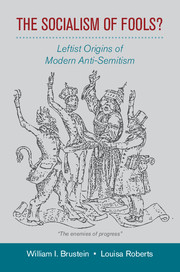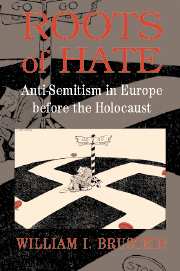26 results
Conclusion
-
- Book:
- The Socialism of Fools?
- Published online:
- 05 July 2015
- Print publication:
- 23 July 2015, pp 187-198
-
- Chapter
- Export citation
Copyright page
-
- Book:
- The Socialism of Fools?
- Published online:
- 05 July 2015
- Print publication:
- 23 July 2015, pp iv-iv
-
- Chapter
- Export citation
2 - France
-
- Book:
- The Socialism of Fools?
- Published online:
- 05 July 2015
- Print publication:
- 23 July 2015, pp 24-82
-
- Chapter
- Export citation
Contents
-
- Book:
- The Socialism of Fools?
- Published online:
- 05 July 2015
- Print publication:
- 23 July 2015, pp v-vi
-
- Chapter
- Export citation
Introduction
-
- Book:
- The Socialism of Fools?
- Published online:
- 05 July 2015
- Print publication:
- 23 July 2015, pp 1-8
-
- Chapter
- Export citation
4 - Great Britain
-
- Book:
- The Socialism of Fools?
- Published online:
- 05 July 2015
- Print publication:
- 23 July 2015, pp 138-186
-
- Chapter
- Export citation
3 - Germany
-
- Book:
- The Socialism of Fools?
- Published online:
- 05 July 2015
- Print publication:
- 23 July 2015, pp 83-137
-
- Chapter
- Export citation
Index
-
- Book:
- The Socialism of Fools?
- Published online:
- 05 July 2015
- Print publication:
- 23 July 2015, pp 209-211
-
- Chapter
- Export citation
Bibliography
-
- Book:
- The Socialism of Fools?
- Published online:
- 05 July 2015
- Print publication:
- 23 July 2015, pp 199-208
-
- Chapter
- Export citation
1 - Before the Left: The Anti-Semitic Thought of the European Enlightenment
-
- Book:
- The Socialism of Fools?
- Published online:
- 05 July 2015
- Print publication:
- 23 July 2015, pp 9-23
-
- Chapter
- Export citation
Acknowledgements
-
- Book:
- The Socialism of Fools?
- Published online:
- 05 July 2015
- Print publication:
- 23 July 2015, pp vii-viii
-
- Chapter
- Export citation

The Socialism of Fools?
- Leftist Origins of Modern Anti-Semitism
-
- Published online:
- 05 July 2015
- Print publication:
- 23 July 2015
Frontmatter
-
- Book:
- Roots of Hate
- Published online:
- 28 June 2009
- Print publication:
- 13 October 2003, pp i-vi
-
- Chapter
- Export citation
Chapter Four - The Economic Root
-
- Book:
- Roots of Hate
- Published online:
- 28 June 2009
- Print publication:
- 13 October 2003, pp 177-264
-
- Chapter
- Export citation
Contents
-
- Book:
- Roots of Hate
- Published online:
- 28 June 2009
- Print publication:
- 13 October 2003, pp vii-vii
-
- Chapter
- Export citation

Roots of Hate
- Anti-Semitism in Europe before the Holocaust
-
- Published online:
- 28 June 2009
- Print publication:
- 13 October 2003
Index
-
- Book:
- Roots of Hate
- Published online:
- 28 June 2009
- Print publication:
- 13 October 2003, pp 377-384
-
- Chapter
- Export citation
List of Figures and Tables
-
- Book:
- Roots of Hate
- Published online:
- 28 June 2009
- Print publication:
- 13 October 2003, pp viii-x
-
- Chapter
- Export citation
Chapter Five - The Political Root
-
- Book:
- Roots of Hate
- Published online:
- 28 June 2009
- Print publication:
- 13 October 2003, pp 265-336
-
- Chapter
- Export citation
Chapter Three - The Racial Root
-
- Book:
- Roots of Hate
- Published online:
- 28 June 2009
- Print publication:
- 13 October 2003, pp 95-176
-
- Chapter
- Export citation



